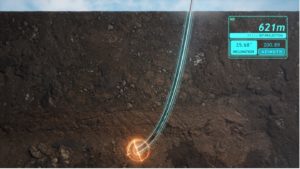Finding the next monster mineral deposit with Mitchell Services new deep drilling technology
Mining
Mining
Drilling to huge depths can be risky, complicated and slow, but there’s new tech available to help exploration reach targets faster and more accurately than ever before.
Australia is a very attractive exploration destination, but many of the shallower, easy to access deposits have already been found.
Some of Australia’s biggest mineral discoveries over the past few years – like Havieron in the Paterson Province, or Oak Dam in northern South Australia – have been under 100’s of metres of sedimentary cover.
Deeper exploration and resource drilling is very expensive and hard to get right however. A target 800m below surface is easy to miss.
Enter Mitchell Services’ new Mineral Performance Drilling (MPD) tech, which allows explorers and miners to rapidly, efficiently, and safely hit targets under deep cover with pinpoint accuracy.

By applying oil and gas technology combined with traditional mud rotary drilling in the minerals exploration space, MPD gives drillers the ability to steer and direct the hole in real time.
Designed inhouse, MPD is used to drill quickly and precisely through the softer sedimentary cover – which can be many hundreds of metres thick – down to the basement or hard rock.
Once the basement formation is intersected, the hole methodology is then changed from MPD to a diamond ‘tail’.

MPD technology results in pinpoint accuracy and gives companies the ability to improve their penetration rates and reduce their unit costs, says Mitchell Services (ASX:MSV) CEO Andrew Elf.
“The customer could say ‘right, we want you to hit this spot’ and we can hit it within centimetres, which really sets up the rest of the hole for success,” Mr Elf says.
“It makes potential deposits which are hidden deep under cover more economically or viable to explore.”
It is faster and more accurate than traditional methods, and importantly the turnaround time is better as well, he says.
“Commercially, the clients can get their data to market quicker, and can make informed decisions faster.”
The Paterson Province is one of Australia’s most highly endowed mineral provinces as clearly evidenced by the giant Telfer gold project (32 million ounces of gold) and the Nifty copper project (2 million tonnes of copper).
Recent discoveries such as Rio Tinto’s (ASX:RIO) Winu project and the Havieron joint venture between Greatland Gold and Newcrest Mining (ASX:NCM) have also sparked considerable interest in its potential to host more world-class discoveries.
But many of the targets here are deep.
Andrew Elf says a customer in the Paterson province is using MPD “with great success”.
“They were having challenges with production, problems with deviation as well, problems with hole failure – so cost per metre and time spent for the client was through the roof,” he says.
“When we brought MPD onto site, its performance and production transformed that program, from ~14 shifts down to about 5 shifts.
“Metres per shift went from 50m to 130m, on average. It has resulted in significant reductions in cost, as much as a 50% reduction.”
This technology is ideal for initial exploration target testing, but the value really scales up when drilling out a resource and a lot of precise, targeted drilling is required, Mr Elf says.
“If you are drilling a deposit out and have many, many holes in a program the savings would be enormous,” he says.
“100 pre collars at 500m depth and a cost reduction of 50% – that’s huge savings.”
A mining boom underpinned by rising commodity prices means miners and junior explorers are exerting all efforts on near-mine extensions and new mineral developments, at a pace not seen since the crisis of 2008.
These activities are in turn driving huge demand for drilling services, benefiting companies like Mitchell.
Mitchell Services has a world class fleet of circa 100 drill rigs and services miners and explorers across the country – making it one of the leading drilling services providers in Australia.
Around 90% of its revenue comes from global Tier-1 companies that include names like Newcrest, Newmont, Anglo American, Glencore and South32.
Revenue is a 50/50 split between surface and underground drilling operations with a focus on brownfields or operating mine sites.
Gold mining makes up around 50% revenue, 30% is from metallurgical coal, and the balance is from Copper and various other commodities demonstrating the diversity and quality of Mitchell Services revenue.
When it comes to an outlook for the drilling sector Andrew Elf says he is “more bullish than I have ever seen”.
“There has been a huge amount of inactivity for a long time – and this is across all commodities – and I think it’s been well published that grades are generally decreasing, and reserves are as well,” he says.
“There needs to be a lot of drilling to turn that around, especially given the transition to a lower carbon economy.
“For at least next couple of years at a minimum we are in for a pretty strong run.”
This article was developed in collaboration with Mitchell Services, a Stockhead advertiser at the time of publishing.
This article does not constitute financial product advice. You should consider obtaining independent advice before making any financial decisions.